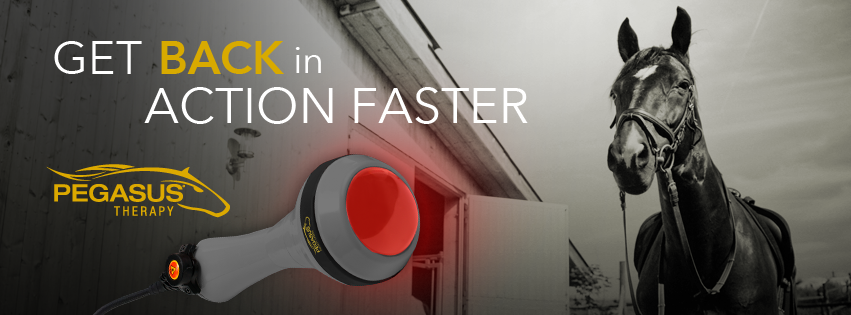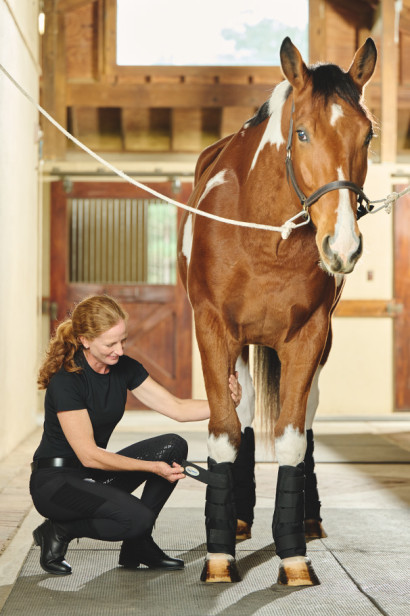Discover the Amazing Benefits of Equine Therapy for Psychological Recovery
Discover the Amazing Benefits of Equine Therapy for Psychological Recovery
Blog Article
Exactly How Laser Treatment in Horse Treatment Is Transforming Veterinary Take Care Of Steeds
Laser treatment has actually emerged as a transformative approach in equine veterinary care, providing a non-invasive service that accelerates recovery and boosts total health and wellness. Leveraging precise light wavelengths, this sophisticated treatment promotes mobile regeneration, decreases swelling, and alleviates discomfort. Its efficacy expands from bone and joint injuries to chronic conditions like osteoarthritis, considerably enhancing flexibility and life top quality for horses. The mobility and convenience of laser therapy devices even more highlight their growing indispensability amongst vets. As we check out the complex technicians and real-world successes, the extensive influence on equine clinical practices becomes progressively obvious.
Understanding Laser Therapy

The modern technology behind laser therapy is based in the concept of photochemistry, where photons are absorbed by chromophores within cells, causing raised ATP manufacturing and modulation of reactive oxygen species (Equine Therapy). This, consequently, advertises cellular spreading, reduces inflammation, and speeds up recovery. Vet professionals utilize various types of lasers, including low-level lasers (LLLT) and high-power Course IV lasers, relying on the details healing objectives and the nature of the equine condition being treated
Various laser wavelengths and power setups are meticulously picked to target numerous cells midsts and achieve desired medical outcomes. Safety methods are extremely important, as inappropriate use can cause thermal damage or suboptimal restorative effects. Thus, a comprehensive understanding of laser treatment's devices and applications is vital for its efficient application in equine veterinary technique.
Advantages for Equine Health
The myriad advantages of laser therapy for equine wellness include enhanced recovery, pain decrease, and enhanced wheelchair. This innovative therapy modality leverages specific wavelengths of light to permeate tissues, boosting cellular function and advertising rapid tissue fixing. The non-invasive nature of laser therapy makes certain minimal tension and pain for the horse, assisting in a smoother recovery process.
Boosted recovery is one of the primary benefits, as laser treatment accelerates cellular regrowth and collagen synthesis. This leads to quicker recuperation times from injuries and operations. Discomfort decrease is attained through the anti-inflammatory impacts of laser treatment, which lowers swelling and reduces the production of pain-inducing chemicals. Consequently, equines experience substantial remedy for chronic and sharp pain problems.
By minimizing swelling and discomfort, and improving cells repair, laser treatment helps in recovering joint feature and muscle mass versatility. Therefore, laser therapy stands as a transformative device in modern equine veterinary care.
Typical Conditions Treated
Laser treatment has arised as a flexible therapy choice for a selection of typical equine problems. Additionally, laser treatment is efficient for problems like osteoarthritis, where it aids alleviate joint inflammation and advertise tissue repair service.
Wound management is an additional area where laser treatment has shown considerable guarantee. Chronic injuries or slow-healing ulcers can be specifically tough in horses, however laser therapy enhances cellular regrowth and boosts blood circulation, therefore accelerating the recovery process. Laser treatments have been effectively used in managing hoof problems such as laminitis and abscesses, alleviating pain and advertising much faster recovery.

Innovation Behind Laser Treatment
Past the myriad problems treatable with laser therapy, the technology itself merits more detailed assessment. At the heart of laser therapy is using particular wavelengths of light to permeate tissues and generate biological reactions. These wavelengths, commonly varying from 600 to 1000 nanometers, are uniquely taken in by chromophores in the skin, muscle mass, and other cells, prompting a cascade of cellular occasions.
Laser tools made use of in vet medicine typically utilize low-level laser treatment (LLLT) or chilly laser therapy. Unlike high-powered medical lasers, these gadgets operate at reduced power levels, optimizing healing benefits while lessening thermal damage. The power from the laser light promotes adenosine triphosphate (ATP) production, enhances cellular metabolic rate, and speeds up tissue repair procedures.

Success Stories and Situation Research Studies

Showcasing the concrete benefits of laser treatment, various success tales and study brighten its transformative influence on equine health. One such situation entails a thoroughbred racehorse suffering from chronic tendonitis. Typical treatments generated very little improvement, but after incorporating laser treatment into the routine, the steed showed substantial decreases in swelling and pain within weeks, eventually returning to competitive auto racing.
An additional engaging example features a dressage horse identified with extreme pain in the back, limiting its performance. A veterinary group utilized low-level laser over here therapy (LLLT) to target the inflamed locations, causing marked improvement in flexibility and a notable decline in pain. Over a number of sessions, the horse reclaimed its peak kind, showcasing the effectiveness of laser therapy click reference in addressing bone and joint concerns.
Furthermore, a research study carried out at a leading equine center analyzed 50 horses with various soft cells injuries treated with laser treatment. The results were striking: 85% of the horses demonstrated accelerated healing times and boosted mobility. These cases emphasize the convenience and effectiveness of laser therapy in equine medication, offering a non-invasive, scientifically-backed strategy to boosting recuperation and efficiency in steeds.
Final Thought
Laser treatment is changing equine vet treatment by offering a non-invasive treatment that increases healing, minimizes inflammation, and reduces pain. With its effectiveness in treating a variety of conditions, from musculoskeletal injuries to chronic conditions like osteoarthritis, this modern technology considerably boosts equine health and wellness and movement. The portability and versatility of laser treatment even more underscore its transformative influence on vet practices, strengthening its duty as a crucial tool in modern equine medical care.
Report this page